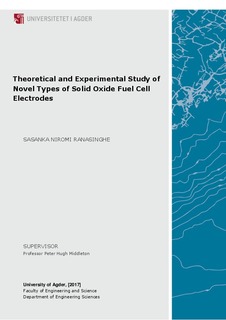| dc.description.abstract | Solid oxide fuel cells (SOFCs) have the potential to become one of the efficient and costeffective system for direct conversion of a wide variety of fuels to electricity. The performance, stability and durability of SOFCs depend strongly on the materials used for the fabrication of electrodes as well as the fabrication process. For anode supported SOFCs, the tape casting method has been the de facto standard for constructing cell components. Furthermore, organic solvents such as ethanol, propanol, terpineol and poly-ethers are generally used in industrial tape casting as the solvent medium to make the chemical slurries out of ceramic powders. Although, the use of organic solvents makes the dispersion of solid chemical particles relatively easier, it is not an environmentally friendly solution.
In this thesis, we address this issue by investigating the possibility of fabricating anode supported SOFC cell components using water instead organic solvents. In addition, this thesis also looks at other aspects of fabricating anode supported cells, namely the need for active and barrier layers to prevent undesirable side relations during sintering and also to improve the performance of the fuel cell. We have in particular looked at the variation in the porosity of the anode support layer and the use of active layers and barrier layers. Hence, the fabricated SOFCs have five layers, namely the anode, active, electrolyte, barrier and the cathode layers.
In order to validate the performance characteristics of the fabricated SOFCs, we have also modelled equivalent theoretical models using COMSOL Multiphysics (version 5.2) software. Our theoretical models are 3D models that are well suited to developing better approximations to the actual experimental data.
The experimental performance was comparable to expectations based on literature data and indicated that our water based formulations are suitable for SOFC development. Moreover, our COMSOL model was able to fit the experimental behavior with careful selection of parameters.
Keywords: Solid oxide fuel cells, fabrication, modelling, simulation. | nb_NO |

